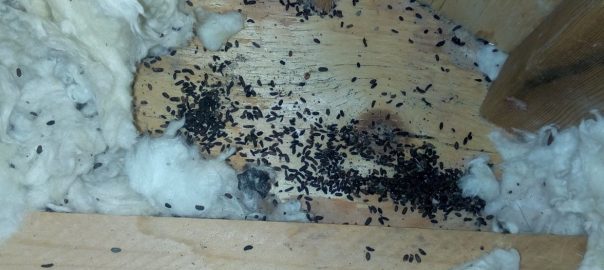Attic Cleaning Tips from Professionals

The attic is typically forgotten and neglected until it is time to clean. So how often should you clean your attic? Clean as often as reasonably possible but at least twice a year and remove attic insulation when it was compromised.
The neglected space continues to gather dust, mould and dander which are spread into the living area via recessed lights, doors, ceiling hatches and heating and cooling systems. Attic maintenance is important and could be a health hazard if neglected for too long.
If you are feeling overwhelmed by the task, there are a few tips from professional attic cleaners in Toronto to hopefully make the job easier and more organized.
Timing is everything
The best way to ensure that you actually get around to cleaning your attic is to schedule it in your calendar. Although any time you have a few hours or a few days to spare may work, there is such a thing as the ideal time to clean your attic.
Early spring: this is when most homeowners do spring cleaning so add the attic to your to-do list. More importantly, around early spring is when wildlife and rodents are notorious for breaking into the attic to escape the cold weather. This is also a great time to inspect your insulation and have it repaired or replaced in good time. If you have raccoon problems call Wildlife Shield for raccoon removal services in Toronto.
Early winter: this makes sense so you can repair or replace your insulation before the cold kicks in. You can also inspect the attic for any sealing or caulking that may be required since your heating system will be working overtime.
Pest warning signs: any time you hear animal activity in the attic is a cue to inspect, seal and clean the attic. Hire a professional for pests in the attic.
Start work as early as possible because the attic only gets hotter as the day goes along. Working in the attic during summer is not recommended.
Safety First
Cleaning the attic is not a simple job. There is potentially all manner of allergens, bacteria and pathogens in the attic so take your safety seriously. A good safety checklist includes;
- Disposable jumpsuit or long sleeve shirt, long trousers and hat to cover as much of the body as possible
- OHS approved mask
- Heavy-duty shoes preferably covered in plastic bags
- Vacuum cleaner with high-quality filter bag or HEPA approved vacuum cleaner
- Full-body harness or other fall arrest system if necessary
- Goggles
- Tool belt or bag to store your tools if any
- Flashlight
Watch out for additional hazards such as exposed nails. Pry out bent nails and hammer down the rest. Avoid resting all your weight on a single joist. Tie up loose wires and cables with zip-ties.
Vacuum Before Sweeping
A broom will simply stir up the dust so begin by collecting larger debris with your hand and then vacuum. Finish off with sweeping. A high-efficiency vacuum bag and the filter is great for picking up dead insects, dust mites and allergens.
Inspect the Insulation
Check if the insulation level is below the floor joists. You shouldn’t be able to see the joists if the insulation is sufficient, exposed floor joists mean you need more insulation. Check that there are no shallow areas or gaps and that the insulation is evenly distributed. Replace insulation if it is damp or has mould or mildew.
Know When to Hire a Pro
There are situations where you will have to call in the professionals. Call in an expert if you have asthma or if being in the attic triggers your allergies.
Definitely call a professional attic cleaning service in Toronto if you have rodents or wildlife in your attic or notice signs of pests in the attic. It is also a good idea to hire professionals to replace your attic insulation. Your new insulation may not perform to the advertised R-Value if not properly installed.
An attic with live or dead animals or with animal feces and urine is a toxic environment and you could easily contract diseases and infections. Some of these diseases are potentially fatal.
A professional will evict the pests, seal the attic to prevent future entry, clean the toxic waste and nest, replace contaminated insulation, clean the attic thoroughly and sanitize and deodorize to kill any bacteria and remove pheromones. Most DIY attempts are unsuccessful and not to mention dangerous.